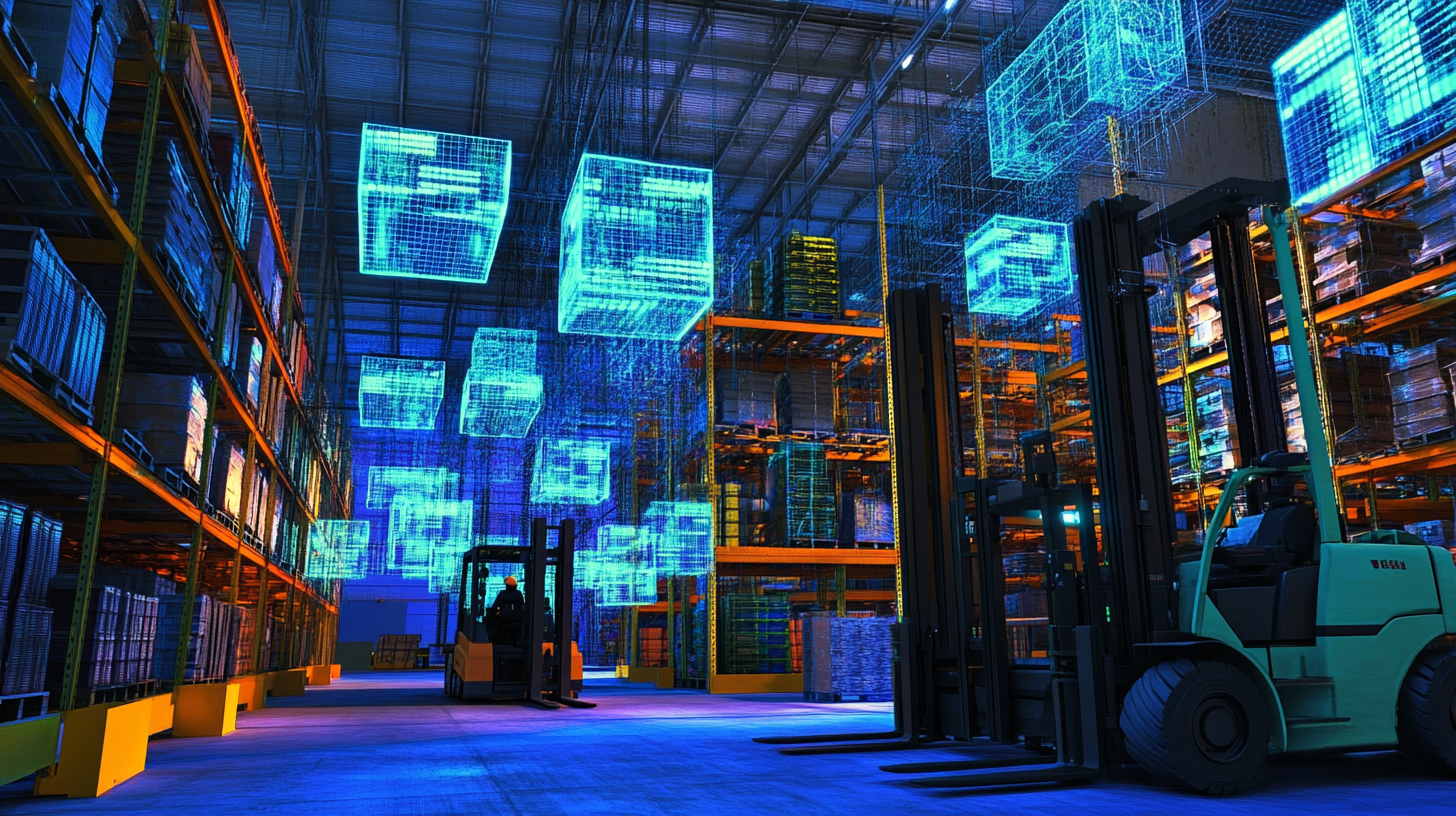Published on: January 5, 2025 / Update from: January 5, 2025 - Author: Konrad Wolfenstein

Warehouse optimization in the USA through warehouse automation and warehouse retrofit – 80% are not yet automated! – Image: Xpert.Digital
From manual labor to high-tech: The transformation of warehouse automation in the USA
In the United States today, over 80% of warehouses are not automated. This number may seem surprising at first glance, especially given the growing demand for fast delivery times and increasing labor challenges. But the warehouse automation sector is facing a profound change that will permanently change the entire logistics industry in the next few years. Companies are increasingly investing in technology to increase efficiency, meet customer expectations and compete in the market.
Current situation of warehouse automation
The current state of warehouse automation in the USA is sobering:
- It is estimated that approximately 80% of warehouses in the United States are not yet automated. This number is consistent with global statistics showing that a similar proportion of warehouses around the world operate without automation.
- Only about 15% of warehouses have been mechanized in the last decade, while only 5% use advanced automation technologies.
This gap is rooted in a variety of challenges, ranging from high costs to a lack of expertise to complex integration processes. Despite these obstacles, there are signs that levels of automation will increase significantly in the coming years.
Suitable for:
Reasons for the low automation
The benefits of warehouse automation are numerous and include greater efficiency, reduced error rates and improved working conditions. However, there are several reasons why many companies have so far forgone automation:
High initial investment
Implementing automation technologies is costly. In addition to purchasing the hardware, there are also costs for integrating and training employees. Small and medium-sized companies in particular shy away from these investments.
Lack of expertise
Around 28.3% of companies report a lack of internal know-how required to implement automation projects. This knowledge gap makes the introduction of new technologies much more difficult.
Integration problems
Existing warehouse infrastructures are often not designed to accommodate automation technologies. Almost a quarter of companies (24.5%) cite difficulties in integrating into existing systems as one of the biggest challenges.
Lack of awareness of the benefits
Many companies are unaware of the potential benefits of automation or underestimate its long-term viability.
Advantages of warehouse automation
Despite the hurdles, the benefits of automation speak for themselves:
- Greater efficiency: Automated systems can perform tasks such as picking, sorting and loading much faster and more precisely than humans.
- Cost savings: In the long term, automation leads to lower operating costs because fewer staff are required and errors are reduced.
- Scalability: Automated systems can easily adapt to changing needs, such as seasonal peaks.
- Competitive Advantages: Companies that invest in automation can offer their customers faster delivery times and greater reliability.
Important trends and developments
The coming years promise dynamic growth in the field of warehouse automation. Several studies and market forecasts show that the demand for automated solutions is increasing rapidly:
- By 2027, approximately 26% of warehouses worldwide are expected to be automated. This is a significant increase compared to the 18% recorded at the end of 2021.
- The global warehouse automation market is expected to reach $35 billion by 2025, with a compound annual growth rate of 12% between 2021 and 2024.
- Strong growth is forecast, particularly in North America: the market value could rise from $7.5 billion in 2024 to $23.2 billion in 2031, with an annual growth rate of an impressive 17.4%.
These figures make it clear that warehouse automation is no longer a topic of the future, but is already playing an increasingly important role in the present.
Warehouse automation technologies
Automation includes a wide range of technologies used for different purposes:
- Automated storage and retrieval systems (AS/RS): These systems enable the automated storage and retrieval of goods. They are particularly efficient when handling small items and tall envelopes.
- Automated Guided Vehicles (AGVs): These vehicles move goods around the warehouse autonomously, reducing the need for human labor.
- Robotic arms: These are commonly used for picking and packing and offer high accuracy and speed.
- AI-supported systems: Artificial intelligence helps to optimize processes, e.g. B. by analyzing data to avoid bottlenecks and improve the flow of goods.
- Drones: Drones are increasingly being used for inventory monitoring and can scan warehouses faster and more efficiently than traditional methods.
Suitable for:
Implementation challenges
However, implementing automation technologies remains complex. In addition to the high costs and integration problems already mentioned, there are further challenges:
- Safety concerns: The introduction of robots and automated systems requires new safety concepts to prevent accidents.
- Regulatory requirements: In some cases, companies must comply with complex regulations that govern the use of certain technologies.
- Employee resistance: Fear of job loss often leads to resistance among the workforce. Companies must therefore develop clear strategies for employee retention and training.
Early automation leads to significant competitive advantages
With the rapid development of new technologies and the increasing adoption of automation, companies will be able to make their warehouses more efficient and flexible. This will not only lead to lower costs and faster delivery times, but also create new opportunities for innovation and growth.
Companies that invest in automation early on will benefit from significant competitive advantages in the long term. At the same time, it remains crucial to address the challenges and ensure that the implementation of new technologies is socially and economically sustainable.
In the next 5 to 10 years, warehouse automation will no longer be the exception but the rule. Companies that recognize and implement this change in a timely manner will secure their position in an increasingly digitalized and automated economic world.
Suitable for:

